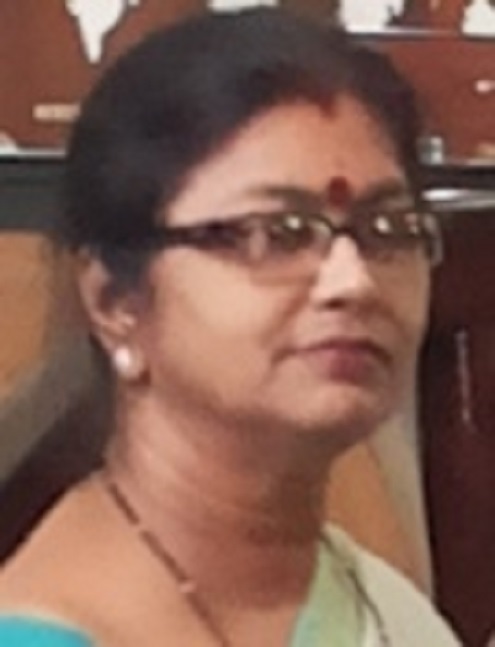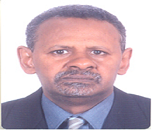5127
Scientific Program
Keynote Session:
Title: Significance of particle size up on delivery of drug in the formulation
Biography:
Dr. A. Krishna Sailaja is currently working as Associate Professor and Head of the Department in RBVRR Women’s college of pharmacy, Osmania University, Hyderabad. She has published 130 research papers in various National and International journals. She delivered more than 25 talks on novel drug delivery systems. Published 5 books and filed 4 patents.
Abstract:
Particle size reduction is considered to be a most important approach to improve the solubility , bioavailability and to attain site specific targeting of the drug.Size of drug delivery systems influences pharmacokinetics, tissue distribution and clearance. Only nanocarriers, including SLN, of a certain size (≤150 nm) are able to enter or exit fenestrated capillaries in the tumour microenvironment or liver endothelium. Nanocarriers circulating in normal blood vessels do not easily leave the capillaries that perfuse tissues such as the kidney, lung and heart if they have a diameter range of 100–150 nm. Smaller particles in the size range of 20–100 nm may distribute to bone marrow, spleen and liver sinusoids. Small particles dissolve more rapidly than large ones, which is important not only in determining the behavior of the drug in vivo but also in various manufacturing processes. The flow properties of powders are strongly dependent on particle size and, in particular, particle shape. Since most powders are moved from one place to another by flowing, control of flow behavior is highly important. Generally, coarse, roughly spherical particles flow much more easily than small or elongated particles. The stability of dispersions, such as suspensions and emulsions, depends on the size of the dispersed material. The forces between colloidal particles depend on their dimensions, and the settling. In this work various colloidal drug delivery systems such as nanoparticles, ethosomes, transferosomes, liposomes, and microspheres in the delivery of drug towards the target site was discussed.
Title: Effect of Binary Solvents on the Nature of 1:1 Fe(III)-Thiocyanate Charge Transfer Spectra
Biography:
Sharda Sundaram Sanjay, Associate Professor, is currently working at the Department of Chemistry, in Ewing Christian College, University of Allahabad. The most recent publication is 'A Brief Manifestation of Nanotechnology.
Abstract:
Fe(III) forms charge-transfer complexes with several inorganic and organic ligands. Charge-transfer complexes (CT- Complexes) are formed in case of molecular association as well as metal ligand complexes. Studies on metal complexes with various ligands in different mixed solvents shows very interesting interactions . We have studied a systematic study of 1:1 Fe(III)-thiocynate CT-Complex using both ultrasonic and spectrophotometric methods, in ethanol-water binary solvent mixture (ethanol-water mixture : 5%, 10%,15%, 20% and 25%) and determined ultrasonic parameters at RTP (298.15K). Since alcohols are Bronsted acids with similar strengths to water, it acs as good hydrogen bond donors and accepters. Therefore serve as “co-solvent” to provide better solubility for the complxes. The separation and solvation of ions reduce the tendency of the complexed ions to associate into aggregates, and ultimately, to precipitate as solids from solution. Through charge–dipole interactions, the dipole moment vectors of the complex in polar solvents orient in such a way so as to create an attractive stabilizing interaction with the charge and geometry of the complex ion.The stability constant and molar absorptivity coefficients of the charge transfer complex formed by Fe (III) with thiocynate ion were determined simultaneously using a graphical method developed in our laboratory. The changing trends in ultrasonic parameters are correlated with the various factors affecting it like hydrogen bonding, charge transfer interaction, dipole-dipole interaction, and Van der Waals interactions etc. Depending on the molecular interactions and the nature of the liquid mixtures the change in the molar volume is discussed in terms of molecular interactions and structural changes.
Title: : Schematic idea with Sustainable Energy
Biography:
Tomoya Ito is an Self-Employment Firm (SofTech). He obtained Schematic idea with Sustainable Energy and Master of Philosophy degree in Renewable Energy Technologies from the Osaka University of technology. He is qualified Self-Employment Firm and micro-system with In this keynote speech a couple of slides to discuss were already shown in a hope that extremely well organized technology source and idea with resolution.
Abstract:
To have consideration with focus on the energy provision matters, there are several findings with a couple of points. First, it is much based upon geographic features respectively on each country, region. For instance like EU area organized countries have each role with generator way, provision system operation as well. One huge element as a country like China should have huge energy power not only for the economic growth but also for the daily life categories. In Japan, of course including myself, we’ve been so wondering with huge power resource required and not so perfectly match to the geography without wider plane area besides Tokyo or around. Secondly, in views of principles of energy generated by technology and equipment it should be handled by organization manner like company, small firms or national corporation. For energy related equipment R&D activities it has been developed globally with each roles which is depending upon source material location, weather condition to suite generator methods for instance marine generator and general power like thermal power or nuclear energy. Lastly, social trend is now running along the light and portable equipment which has much influence with over all energy situation. Most people upper layers have smart device in hand like this and the power is to be supplied with portable battery like this. It means it could be deployed into wider, bigger energy scale like organization. Public energy provision. It is of course still on the course of development and yet to carry out in the practice however while huge energy source generated by Thermal power by oil heated or nuclear energy with safety much more sophisticated than the time era before. It can cause essential social issues to solve. In this keynote speech a couple of slides to discuss were already shown in a hope that extremely well organized technology source and idea with resolution.
Title: The role and experience of Sudan in assisting to develop and implement national drug policies
Biography:
Abdeen Mustafa Omer (BSc, MSc, PhD) is an Associate Researcher at Energy Research Institute (ERI). He obtained both his PhD degree in the Built Environment and Master of Philosophy degree in Renewable Energy Technologies from the University of Nottingham. He is qualified Mechanical Engineer with a proven track record within the water industry and renewable energy technologies. He has been graduated from University of El Menoufia, Egypt, BSc in Mechanical Engineering. His previous experience involved being a member of the research team at the National Council for Research/Energy Research Institute in Sudan and working director of research and development for National Water Equipment Manufacturing Co. Ltd., Sudan. He has been listed in the book WHO’S WHO in the World 2005, 2006, 2007 and 2010. He has published over 300 papers in peer-reviewed journals, 200 review articles, 7 books and 150 chapters in books.
Abstract:
Improving effectiveness of the public pharmacy is by switching resources towards areas of need, reducing inequalities and promoting better health. Unless there are clear incentives for pharmacists, they can move away from public sector. The public sector is rigid, bureaucratic personnel-management practices, low incentives, poor job satisfaction and unsupportive work environment compared to the private sector. Such situation demoralised pharmacists and encourages them to join the private sector. Many (65%) of surveyed private-sector pharmacists claimed they were public sector pharmacists migrated to the private sector. Although information on migration is sparse, anecdotal evidence persuasively underscores the problem. An internal flow of pharmacists plagues all states, since pharmacists move from poorer states to wealthier ones and from the public sector to the private. Strategies to meet current and future challenges in pharmacy human resources are urgently needed. Approaches that focus on the training of individuals, which do not take into account the job satisfaction (i.e. the nature of the work itself) and pharmacists' mobility, can enjoy only limited success. Increased production alone cannot compensate for weak motivation, high attrition and increasing mobility. To reverse decades of neglect, policy-makers in both (state and federal level) should begin now, first by recognising the problem and secondly by fixing it through the immediate implementation of potentially effective strategies.





